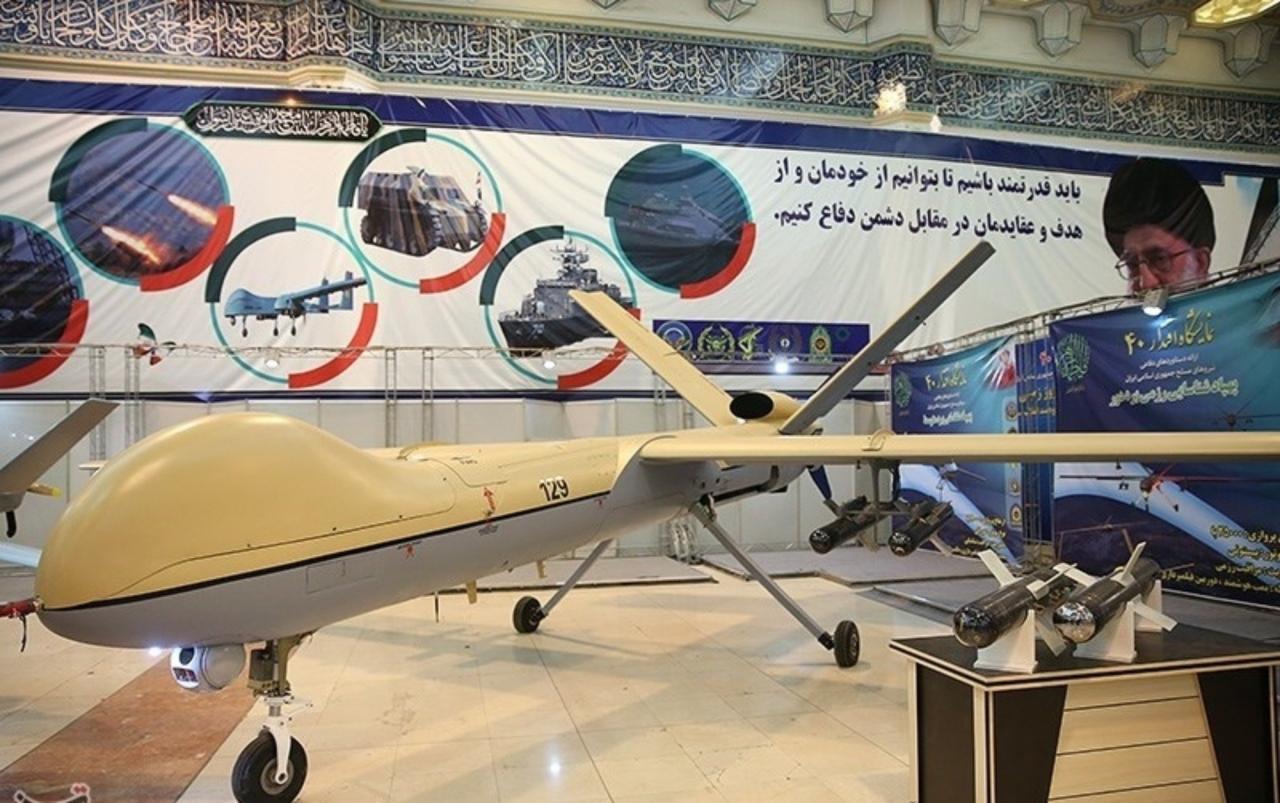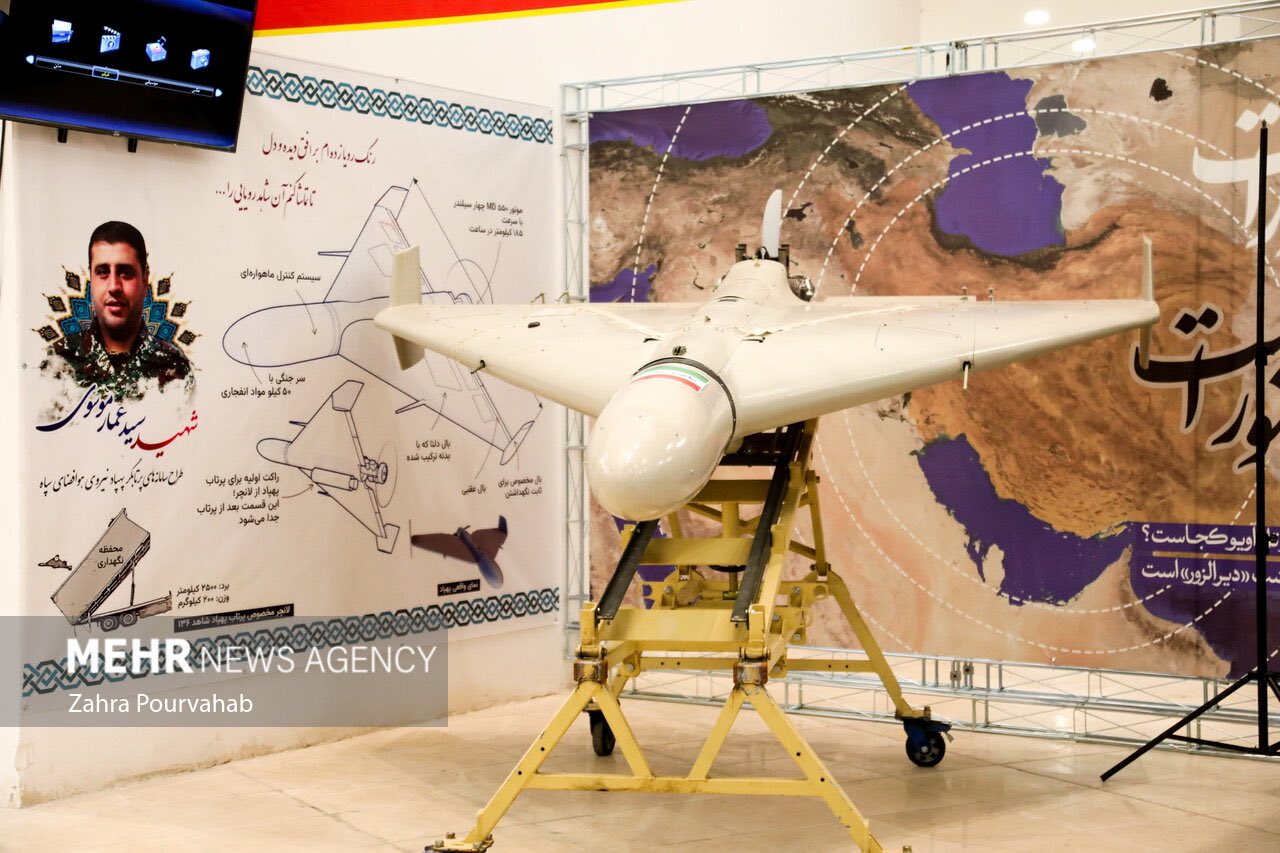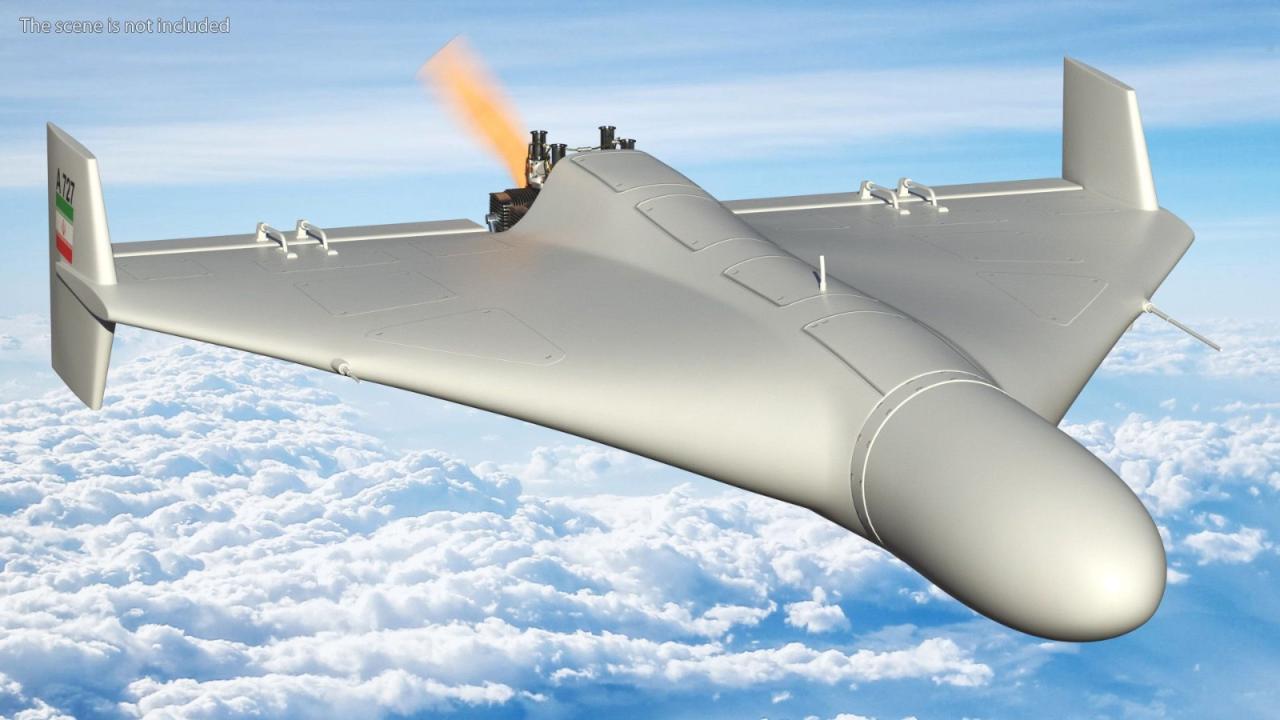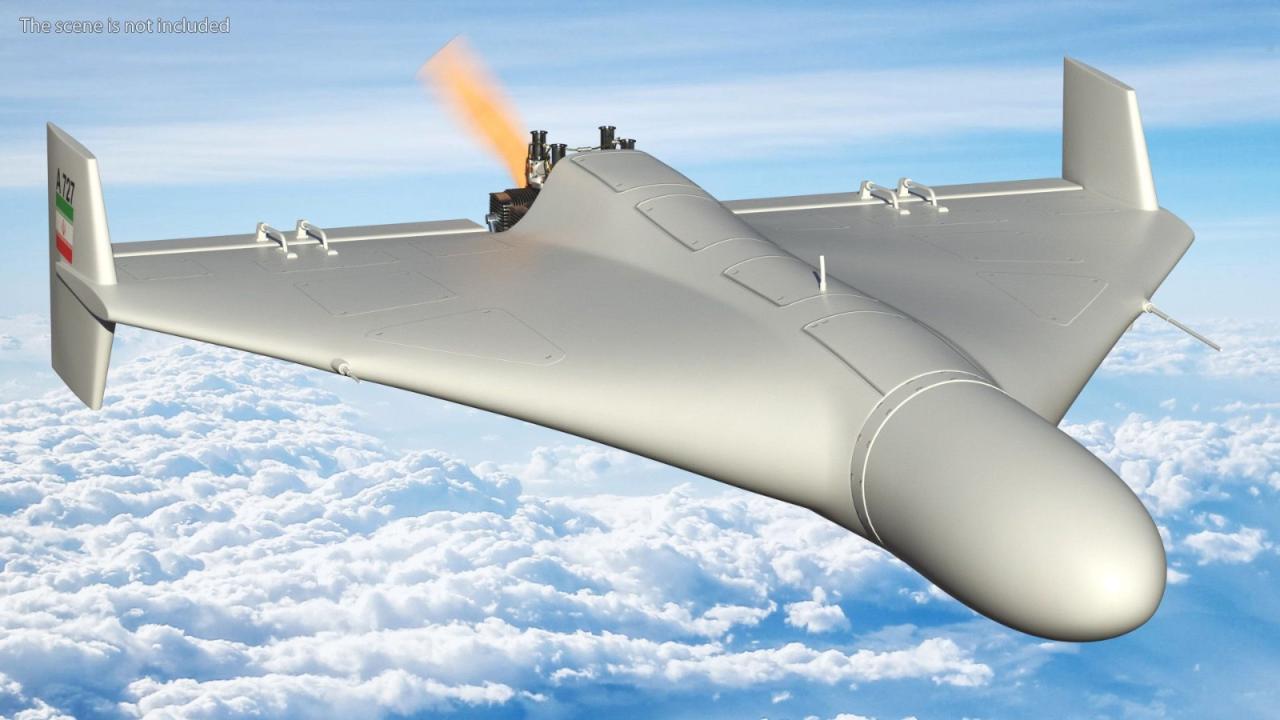Shahed drones have emerged as a significant player in modern conflict, prompting global discussions on their tactical implications and ethical concerns. This examination delves into the technical specifications, operational capabilities, manufacturing processes, deployment strategies, countermeasures, and societal impact of these unmanned aerial vehicles. We will explore their design, functionality, and the controversies surrounding their use, providing a balanced perspective on this rapidly evolving technology.
From their relatively simple design to their devastating impact on the battlefield, the Shahed drone represents a paradigm shift in asymmetric warfare. Understanding its capabilities and limitations is crucial for navigating the complexities of modern geopolitical landscapes and anticipating future developments in drone technology.
The Shahed drone, a relatively inexpensive but effective weapon, has garnered significant attention for its use in various conflicts. The recent incident involving a nj drone shot down highlights the growing concerns surrounding civilian airspace security and the need for robust counter-drone measures. This incident, while unrelated to the Shahed, underscores the broader challenges posed by the proliferation of such unmanned aerial vehicles.
Shahed Drone: A Comprehensive Overview
The Shahed drone, a relatively low-cost, expendable unmanned aerial vehicle (UAV), has gained significant notoriety for its widespread deployment in various conflicts. This overview delves into its technical specifications, operational capabilities, manufacturing process, deployment tactics, countermeasures, societal impact, and visual characteristics, providing a comprehensive understanding of this impactful technology.
Shahed Drone Technical Specifications
Understanding the Shahed drone’s physical attributes and internal systems is crucial to assessing its capabilities and limitations. These specifications, while subject to variations depending on the specific model and reporting sources, offer a general understanding of the drone’s design.
| Specification | Value | Unit | Source |
|---|---|---|---|
| Length | ~2.5 – 3.5 | meters | Open-source intelligence reports |
| Wingspan | ~2.0 – 2.5 | meters | Open-source intelligence reports |
| Weight | ~200 | kilograms | Open-source intelligence reports |
| Payload Capacity | ~40-50 | kilograms | Open-source intelligence reports |
| Materials | Composite materials, including fiberglass and possibly carbon fiber | N/A | Analysis of recovered drones |
| Engine Type | Internal combustion engine (likely a small, modified motorcycle engine) | N/A | Reverse engineering and open-source analysis |
| Fuel Capacity | ~80 | liters | Open-source intelligence reports |
| Flight Duration | ~10 – 12 | hours | Open-source intelligence reports |
| Navigation System | Inertial Navigation System (INS) and possibly GPS | N/A | Analysis of recovered drones and open-source reports |
| Sensors | Likely includes simple imaging systems for targeting | N/A | Analysis of recovered drones and open-source reports |
Shahed Drone Operational Capabilities

The operational effectiveness of the Shahed drone is a function of its range, endurance, flight modes, and targeting precision. These aspects determine its strategic and tactical utility in conflict.
The Shahed drone’s range is estimated to be several hundred kilometers, varying based on wind conditions, altitude, and payload. It can operate in both autonomous and manual flight modes, allowing for pre-programmed missions or real-time operator control. Its targeting system, while not highly precise, relies on relatively simple guidance mechanisms. The accuracy of strikes is generally considered low, relying on sheer numbers to overwhelm defenses.
Shahed Drone Manufacturing and Production
The manufacturing process and supply chain of the Shahed drone contribute to its relatively low cost of production. This allows for mass production and deployment, making it a cost-effective tool for asymmetric warfare.
- The manufacturing process likely involves a combination of manual assembly and automated processes.
- Key components include readily available off-the-shelf parts, reducing reliance on specialized suppliers.
- Materials such as fiberglass and possibly carbon fiber are used in the drone’s construction.
The estimated cost of production per unit is believed to be relatively low, ranging from a few thousand to tens of thousands of dollars, making mass production feasible.
Shahed Drone Deployment and Tactics
Deployment methods, tactical advantages, and comparisons with other UAVs provide context to the Shahed drone’s overall military effectiveness.
Shahed drones are typically launched from ground-based sites, and operational procedures involve pre-programmed flight paths or real-time operator control. Their low cost and expendable nature make them suitable for swarm attacks, overwhelming enemy defenses through sheer numbers. However, their relatively low precision and vulnerability to countermeasures represent significant drawbacks.
The Shahed drone, a relatively inexpensive but effective weapon, has garnered significant attention for its use in various conflicts. Understanding the regulations surrounding drone operation is crucial, especially given the potential for misuse. For those considering legitimate drone operations in Canada, obtaining a transport canada drone license is a necessary first step. This ensures compliance and helps prevent incidents involving these increasingly prevalent unmanned aerial vehicles, such as the Shahed drone.
| Feature | Shahed Drone | Competitor A (e.g., Switchblade 300) | Competitor B (e.g., Bayraktar TB2) |
|---|---|---|---|
| Range | Several hundred kilometers | ~10 kilometers | ~150 kilometers |
| Payload | ~40-50 kilograms | ~2.5 kilograms | ~55 kilograms |
| Precision | Low | High | Medium |
| Cost | Low | Medium | High |
Shahed Drone Countermeasures and Defense

Effective countermeasures are essential to mitigate the threat posed by Shahed drone attacks. These measures range from electronic warfare to physical defenses, and the development of comprehensive defense systems is crucial.
Electronic warfare techniques, such as jamming GPS signals and disrupting communication links, can be effective. Physical defenses, including anti-aircraft artillery and missile systems, can also be employed. A hypothetical defense system against Shahed drone swarms could incorporate a layered approach combining radar detection, electronic jamming, and interceptor drones or missile systems.
Shahed Drone Societal Impact
The widespread use of Shahed drones has significant humanitarian and geopolitical implications, raising serious ethical concerns.
Shahed drone attacks have resulted in civilian casualties and infrastructure damage, exacerbating humanitarian crises. Their proliferation raises concerns about the potential for escalation of conflicts and the destabilizing effects on regional security. The low cost and ease of use of the Shahed drone make it accessible to non-state actors, further increasing the risks.
- The lack of precision in strikes leads to unacceptable levels of civilian casualties.
- The ease of acquisition and deployment increases the risk of proliferation to non-state actors.
- The use of expendable drones blurs the lines of accountability for attacks.
Shahed Drone Visual Representation

The Shahed drone is characterized by a relatively simple, almost rudimentary design. It is generally described as a slender, roughly cylindrical fuselage, with a relatively long wingspan in comparison to its length. The wings are straight and relatively unswept. The drone is typically light gray or off-white in color, with minimal visible markings. There are typically no prominent antennas or external sensors visible from casual observation.
The tail section features a simple, cruciform tail configuration with a relatively small vertical stabilizer and horizontal stabilizers. The engine exhaust is located at the rear of the fuselage. The overall impression is one of a functional, low-cost design prioritizing simplicity and ease of manufacturing over sophisticated aerodynamics or stealth capabilities.
In conclusion, the Shahed drone presents a multifaceted challenge, raising crucial questions about military strategy, technological advancement, and international humanitarian law. While its low cost and ease of production offer a tempting advantage for certain actors, its indiscriminate nature and potential for civilian casualties underscore the urgent need for effective countermeasures and a broader international dialogue on responsible drone development and deployment.
The future of warfare, it seems, is inextricably linked to the ongoing evolution of this controversial technology.
FAQ Overview
How much does a Shahed drone cost to produce?
Estimates vary widely, but sources suggest the production cost is relatively low, ranging from a few thousand to tens of thousands of dollars per unit.
What type of explosives do Shahed drones typically carry?
The exact payload varies, but they generally carry a high-explosive warhead designed for maximum blast effect.
Can Shahed drones be jammed or disrupted electronically?
Yes, electronic warfare measures, including jamming and spoofing, can be effective countermeasures against Shahed drones, although the effectiveness varies based on the specific technology employed.
Are Shahed drones reusable?
No, Shahed drones are typically designed for single-use missions.
